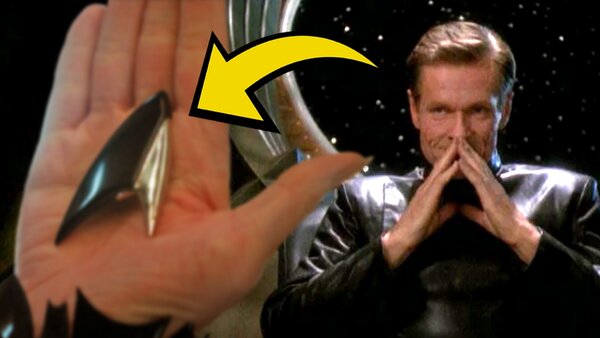Star Trek: 10 Things You Didn't Know About Section 31
Love it or hate it, Section 31 definitely made an impact on Star Trek and its fans.

Star Trek: Deep Space Nine premiered in January 1993. It quickly gained a reputation as a darker, grittier take on Star Trek than Gene Roddenberry had envisioned. In a series that explored war, disease, genocide, and colonialism, some of the darkest storylines involved the shadowy intelligence agency, Section 31.
Section 31 was as controversial in-universe as it was among fans. An agency lurking in the shadows whose operatives could carry out assassinations, acts of sabotage, and biological warfare in the name of protecting the Federation was seen as abhorrent to Federation ideals. However, there were those who considered Section 31 the thin, black line between utopia and oblivion. As Luther Sloan once explained, he and other Section 31 operatives did the things Starfleet officers couldn't or wouldn't do so that idealists could go to bed with a clear conscience.
In the real world, a vocal segment of Star Trek fans felt that including such an agency in Star Trek was antithetical to Gene Roddenberry's vision. Other fans saw Section 31 as adding much-needed conflict and nuance to the long-running franchise.
Fan of the concept or not, here are ten things you didn't know about Section 31.
10. Their Name Came From A Section Of The Starfleet Charter
As revealed in Star Trek: Enterprise, Section 31 began in the 22nd century. It took its name from Article 14, Section 31 of the Starfleet Charter which authorized extreme measures during periods of extraordinary threat.
The terms "extreme measures" and "extraordinary threat" seemingly meant whatever Section 31 needed them to mean to justify their operations.
For example, in 2154, Section 31 let Klingon operatives kidnap a Starfleet doctor to work on a cure for the Klingon Augment virus in exchange for a mutually advantageous alliance with the Klingons.
In the 23rd century, Section 31 used the perceived threat of a temporal arms race to justify stealing a time crystal from the Klingons and deceiving the Vulcans about the time travel research undertaken by Federation scientists at a joint human-Vulcan research facility on the Vulcan colony Doctari Alpha.
In the 24th century, Section 31 used the Dominion War to justify ruining a Romulan ally's career, experimenting on Changeling POWs, creating a biological weapon, planning a genocide, and using Odo as a carrier for a disease.
In the Kelvin timeline, Admiral Marcus used the threat of a Klingon war to justify using Khan Noonien Singh to build weapons.